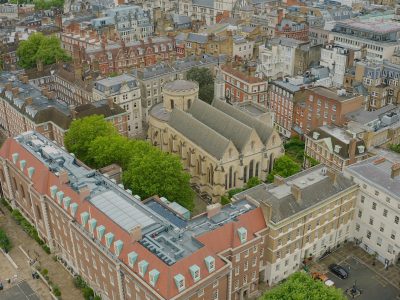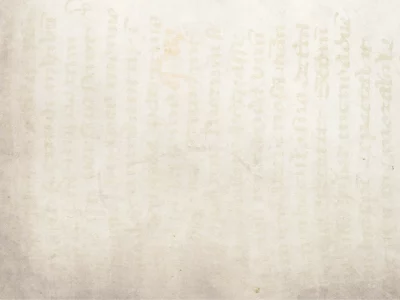
Literature and Chronicles: Highlights of the Library’s Manuscript and Rare Book Collections
In addition to the ‘working’ Law Library, the Inn possesses an impressive collection of rare printed books and manuscripts, many on non-legal subjects, which are regrettably only rarely seen. Among visiting scholars, it is indeed the literary and historical works that tend to elicit most interest. There follows a brief account of some of the books and manuscripts within these categories. The choice is entirely subjective!
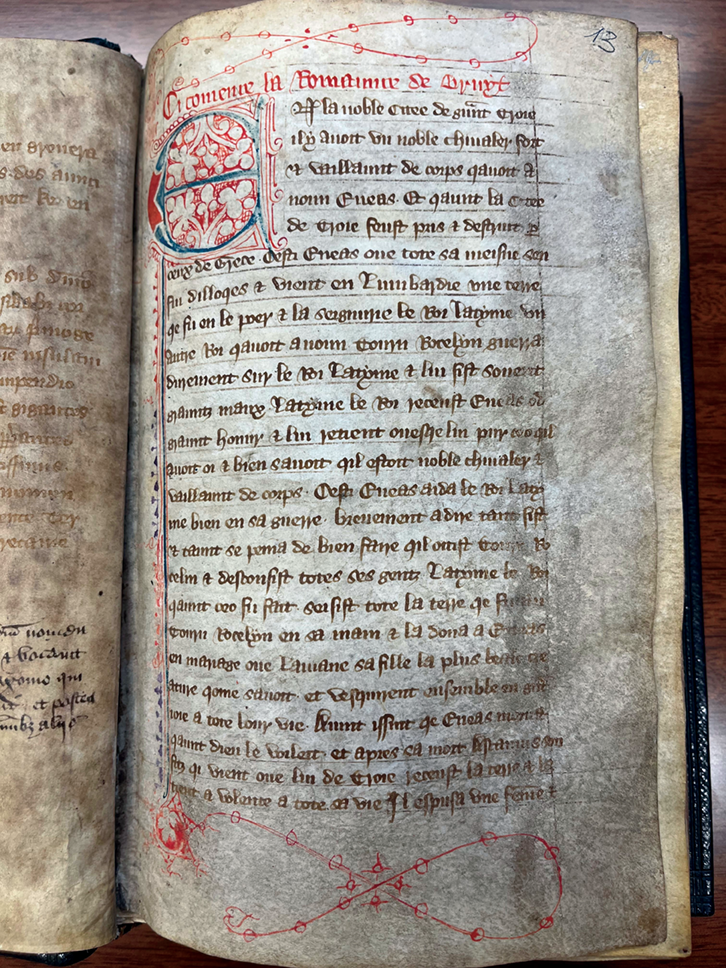
The Romance of Brut
This begins: “En la noble citee de graunt Troie, il y avoit un noble chiualer…”
The Roman de Brut was composed about 1150 by the Anglo-Norman poet and chronicler, Wace, who based his work on Geoffrey of Monmouth’s (Latin) History of the Kings of Britain. It describes the career of Brutus, a descendant of Aeneas, who comes with a party of companions to the British Isles and, finding them uninhabited, takes possession. The legend of Britain’s descent from ancient Troy was widely accepted in pre-Conquest times.
The Roman de Brut is a verse chronicle of some 1500 lines in octo-syllabic couplets. An English version with further extensive additions was made by the Middle English poet, Layamon of Worcestershire. This is of interest as it gives for the first time not only the story of Arthur, but also that of Lear and Cymbeline. The Inn’s manuscript copy (Petyt MS 511.19) is of the late 14th or early 15th century.
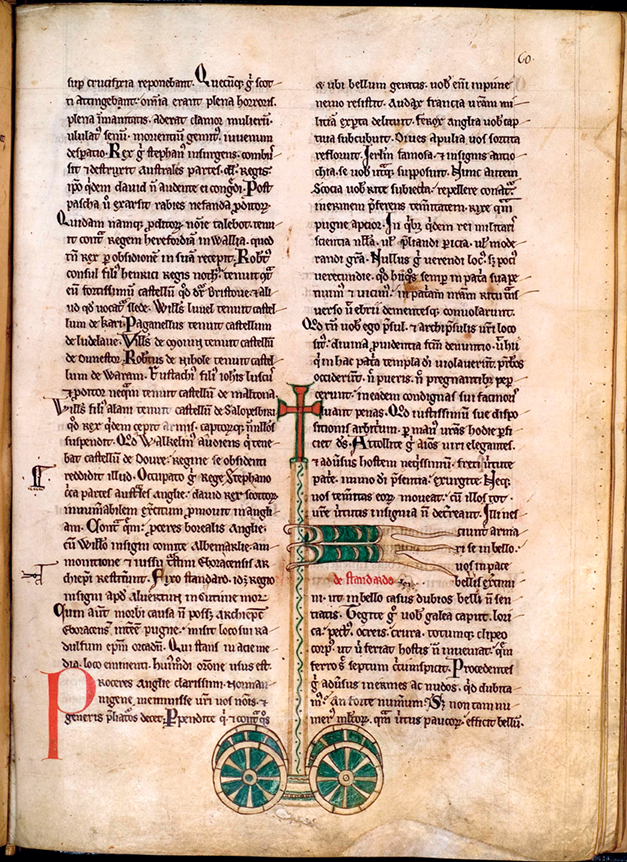
Roger de Hoveden’s Chronica
Roger de Hoveden (that is, of Howden in East Yorkshire) served as a clerk at the court of Henry II from about 1173 until after the King’s death in 1189. After leaving royal service, probably by 1192, he began writing his Historia Anglorum or Chronica, a history of England from the time of Bede. Like many historical writings of that period, it consisted largely of compilations from earlier manuscripts, though the fourth and final part is Roger’s own original work, incorporating many contemporary documents. It is believed that he died in 1201, since his chronicle ends somewhat abruptly in that year.
Possibly written in the Durham scriptorium, and known to have been in the possession of the Abbey of Rievaulx early in the 13th century, our copy (Petyt MS 511.2) is one of the earliest surviving manuscripts of Hoveden’s work.
The printed book (Polycronycon of 1527) has a part-engraved title-page in red and black, showing the device of John Reynes, who bore the cost of the printing: St George slaying the dragon.
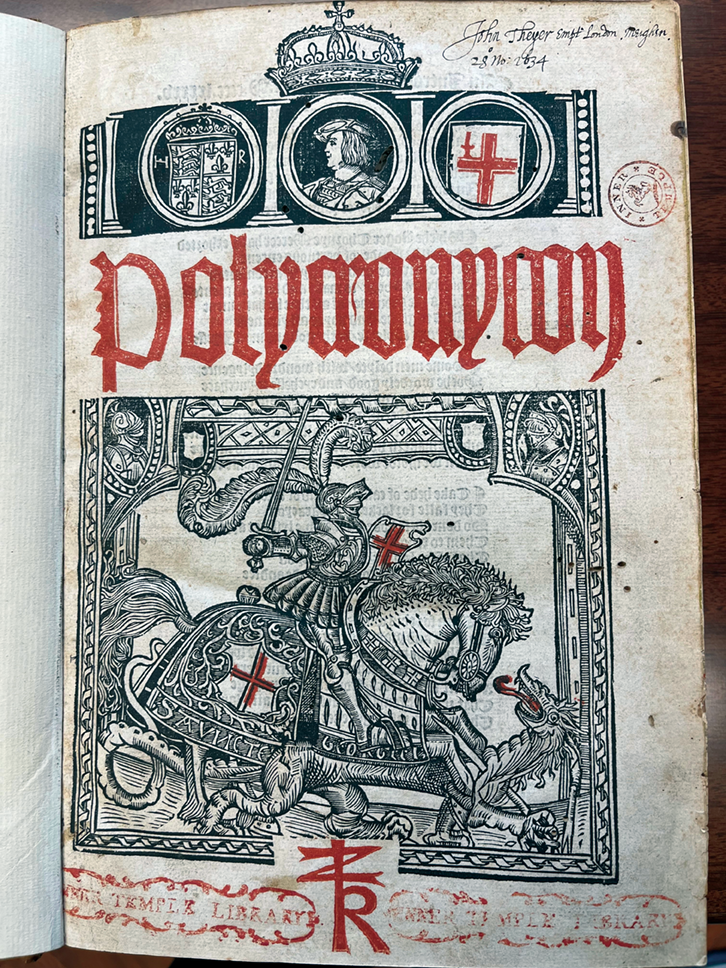
Ranulf Higden’s Polychronicon
The Inn is fortunate to own this work both in manuscript form and as an early printed book.
Ranulf Higden (d 1364) was a Benedictine monk at St Werburgh’s Abbey, Chester, which became Chester Cathedral after the Dissolution. His fame rests on his Polychronicon, which is a universal history down to his own time. It was the most exhaustive history that had yet appeared, and it enjoyed great popularity for nearly two centuries. There are said to be over a hundred manuscripts extant. (Some of these are described in the prefaces of the edition of the Polychronicon in the Rolls Series, Vol 41, 1–10).
This manuscript passed through the hands of seven identified owners before reaching the Inn. J Conway Davies’s catalogue of Inner Temple Library manuscripts states somewhat drily that “The volume is written in two columns throughout. The hand is moderate, the parchment reasonable and the ink satisfactory for its period.” Remnants of the original catalogue entry from the Library of William Petyt can be seen on one of the flyleaves.
The printed book (Polycronycon of 1527) has a part-engraved title-page in red and black, showing the device of John Reynes, who bore the cost of the printing: St George slaying the dragon. The same leaf bears the signature of John Theyer (1634). The colophon reads, in full: “Imprented in Southwerke: By my Peter Treueris at ye expences of Iohn Reynes boke seller at the sygne of saynt George in Poules chyrchyarde, The yere of our lorde god MCCCCC. xxvii. the. xvi. daye of Maye.”
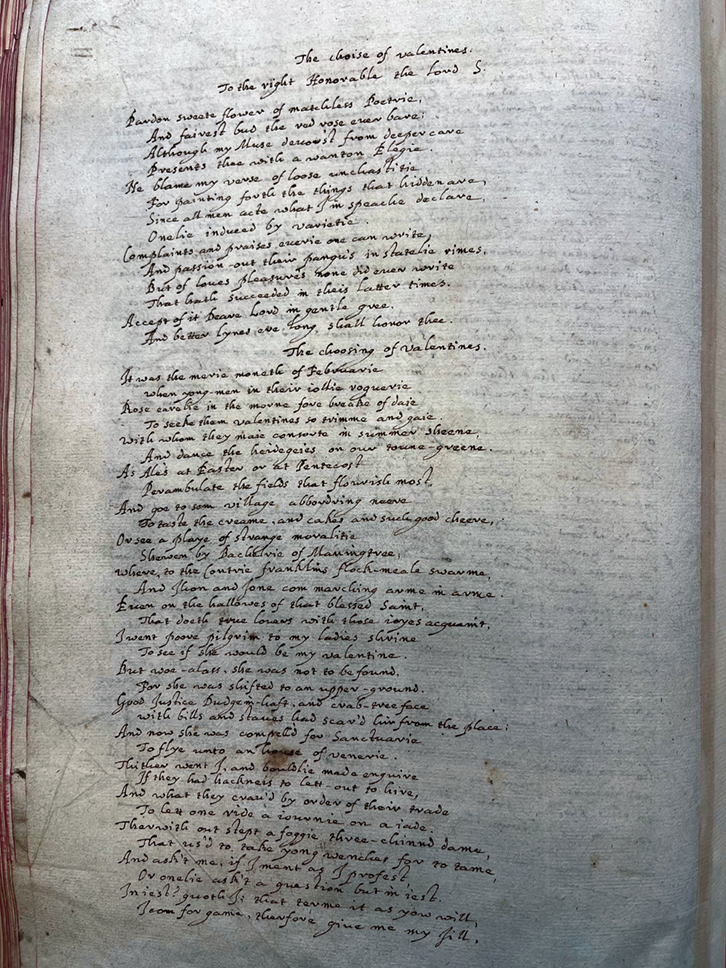
Thomas Nashe’s The Choise of Valentines
The Choise of Valentines, Or the Merie Ballad of Nash His Dildo, thought to have been composed in 1592–1593, recounts in the first person a sexual encounter between a man and his female lover in a brothel on Valentine’s Day. The poem includes the first known use in English of the word ‘dildo’ and describes the item in detail. This manuscript copy is one of only three extant, the other two being in the Bodleian Library and the Folger Shakespeare Library (Washington, DC) respectively. The poem was never printed during Nashe’s lifetime.
The Choise of Valentines, or the Merie Ballad of Nash His Dildo, thought to have been composed in 1592–1593, recounts in the first person a sexual encounter between a man and his female lover in a brothel on Valentine’s Day.
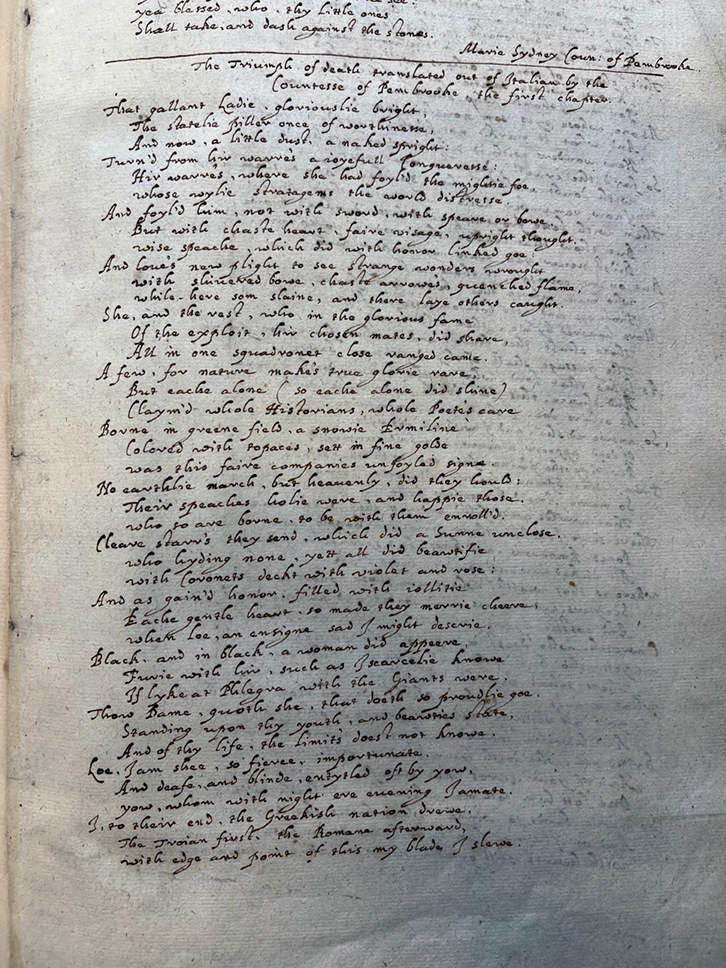
Petrarch’s The Triumph of Death
Translated by Mary Sidney, Countess of Pembroke (1561–1621)
Sidney’s translation of Petrarch’s Trionfo della Morte, or The Triumph of Death, has been frequently acknowledged by scholars as one of the most accurate translations of the poem into English. Sidney translates Petrarch’s Italian into English almost exactly word for word, and retains the poem’s original terza rima rhyme scheme meticulously. This copy, which was originally sent to Lucy Russell, Countess of Bedford (1580–1627), by Sir John Harington (1561–1612), is the only one known to exist. Not surprisingly, then, this is one of the most popular items in the collection among visiting scholars.
Sidney translates Petrarch’s Italian into English almost exactly word for word, and retains the poem’s original terza rima rhyme scheme meticulously.
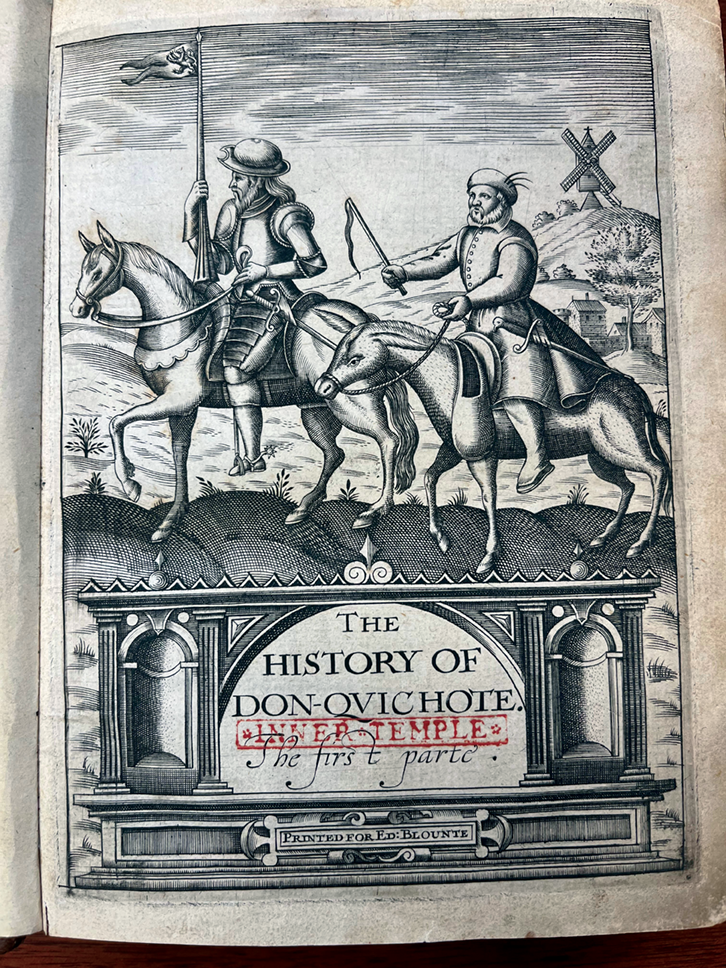
Cervantes’s Don Quixote
The first English translation, 1612
This year marks the 420th anniversary of the publication of El Ingenioso Hidalgo Don Quixote de la Mancha, by Miguel de Cervantes Saavedra (1547–1616). Considered by many to be among the greatest novels ever written, it was first published in two parts: part one in 1605 and part two in 1615.
This first English translation of part one, by Thomas Shelton (fl 1598–1629), was published in 1612. Despite some occasional signs of haste (Shelton claimed to have completed his translation in only 40 days), it is regarded as a good translation, benefiting from Shelton’s knowledge of contemporary Spain and reproducing in a lively style the spirit of the original. Few good copies, of which The Inner Temple’s is one, have survived.
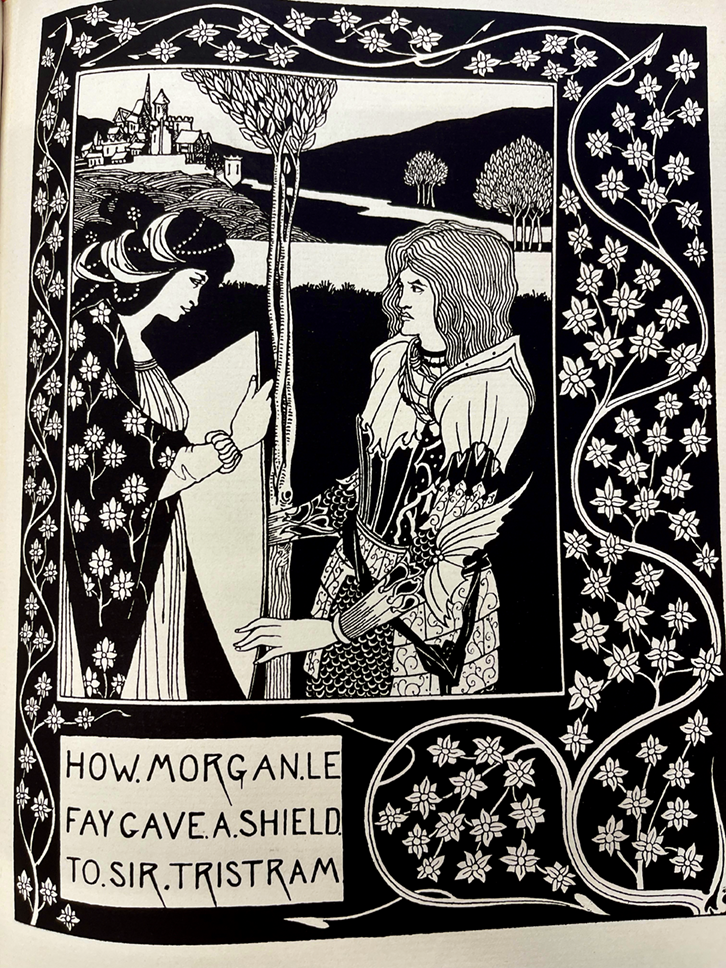
Le Morte Darthur
with illustrations by Aubrey Beardsley
Aubrey Beardsley (1872–1898) was commissioned by the publisher Dent to illustrate this edition of Thomas Malory’s Le Morte Darthur when he was only 21 years old, in 1893. It is said that, although Beardsley was initially glad of the work, he became disenchanted with the (very onerous) project, which involved a good deal of near-repetition of similar motifs, aside from the set-piece, full-page scenes. No doubt he turned with relish to his next commission, in 1894: the illustrations for Oscar Wilde’s French play, Salomé, which brought him widespread notoriety. The Inn’s copy is from the second printing of 1909, a limited edition of 1,500 copies (1,000 for the United Kingdom and 500 for America), on completion of which the type was dispersed.
It was William Caxton who produced the first printed edition of Le Morte Darthur in 1485, about 15 years after its composition by Sir Thomas Malory. The text here is that of Caxton’s edition, with modernised spellings.
It is a matter for regret that material from ‘special collections’ is not more visible, largely for space reasons. That said, Library users will be pleased to note that we hope, fairly soon, to have the facilities to display items from the manuscript and rare books collections on a rotating basis.
Michael Frost
Assistant Librarian
